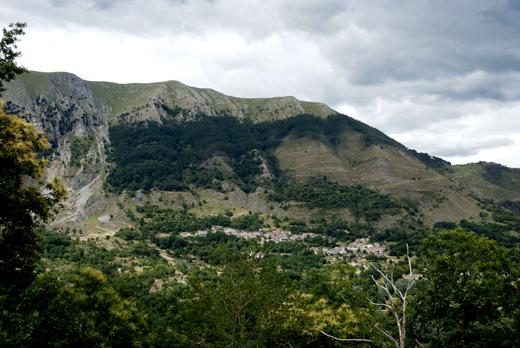
San Cassiano di Controni is 490 meters above sea level, 10 kilometers from Bagni di Lucca, there are two roads to reach it,the first is from Corsena passing Refubbri,Guzzano,Gombereto,Longoio,San Gemignano,the second is along the Brennero SS.12 until the junction that takes to Palleggio,continuing on the road. La Controneria is the largest and most populated area of Bagni di Lucca, the most important villages in this area are Pieve di Controne, San Gemignano and San Cassiano.There are also Guzzano,Gobereto,Mobbiano,Longoio and Vetteglia.San Cassiano is made up of different little groups of houses named Campiglia,Cappella,Vizzata,Cembroni,Cocolaio,Livizzano,Chiesa and Piazza. At the ‘Refubbri’ a place on the road to Bagni di Lucca,theres an ortary dedicated to the Visitation of Mary, her gaze wanders towards Pratofiorito and its nearby mountains.This was one of the favourite walks of Elizabeth and Robert Browning english poets of the 19thcentury,when they stayed in Bagni di Lucca.Robert Browning in the peom “By the Fire-side” describes this walk.The origin of the name Controne is unknown.
The history
In some parchements of 758,772,777,and 787 Controne and Contronese was in use. Cembroni in remembered in a document of 913,Cocolaio in records of the year 983.Until the middle of the 13thcentury La Controneria extended from Fegana to Camaione the principle church was not the antique Pieve San Stefano di Bargi but the Pieve di Santa Guilia which is now the area of the cimitery of Pieve di Monti di Villa.After the middle of the 13th century they formed two parishes, with the River Camaione used as a boader line between the two territories. In 1197 the city council agreed to an alliance with San Genesio of Florence,San Miniato Prato and Volterra to liberate the territory from a feudal bond.The Controneria sweared loyalty to the council in 1214.With the help of Francesco Castracani by returning to make part of the Parish of the Val di Lima they had special privileges because of it’s large population and was represented in the Parliament of the Val di Lima by four mayors, from the 19th century these mayors chose to live at San Cassiano.San Gemignano and San Cassiano until the middle of the 1600’s was one comunity but because of a clash of interests they divided in 1637 and lived separatly even though they had the same mayor.In the files of the city council of Bagni di Lucca theres two statutes of 1572 and1637. In 1784 a large landslide torn from Pratofiorito distroyed Celle and Cerro,but there was no lose of life,but it modified the territory. The parish church dates from the 10th century and in the 12th century was extended. The bell tower is partly prior to the church but the apse was added in the 17th century.The front of the church is made of a double row of arches,the entrance door has zoomorphie figures and geometric lines and lots of animals on the lintel. Inside it has three aisles divided by pillars and capitals,a stone floor,above the baptism fountain (an eagle has a rabbit between its claws),theres a wooden ceiling. The wooden pulpit is valuable. The organ ia an Agati-Tronci of 1897 (n°1183). An important statue of the “horseman of San Cassiano” (cavaliere di San Cassiano) after its restoration it was identified as a work of Jacob della Quercia (1374-1438).




